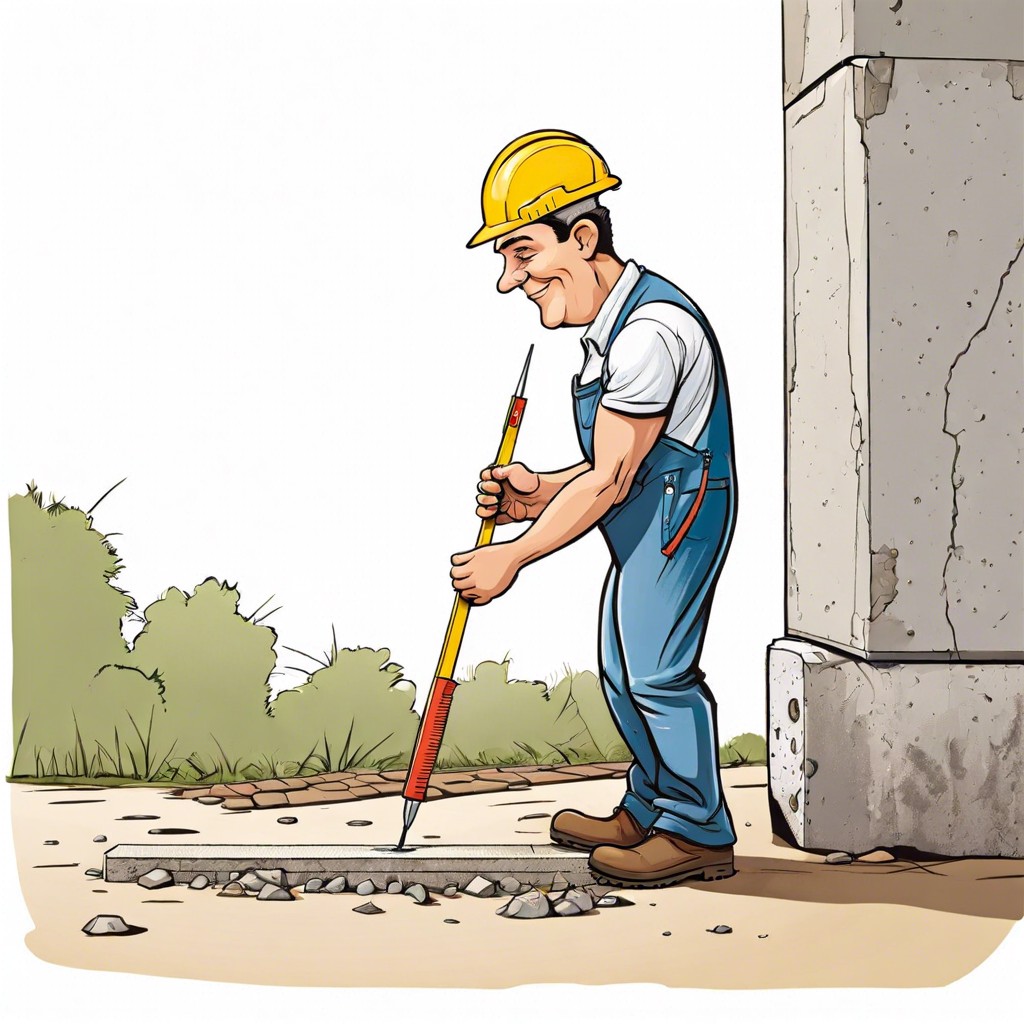Learn how to estimate the amount of concrete needed for your project accurately and efficiently with these straightforward tips.
So, you’ve got that concrete project lined up and now find yourself knee-deep in the world of estimations. Wondering exactly how many yards of concrete you’ll need to make your dream patio or driveway come to life? You’ve landed in the perfect place. We’ll walk you through measuring the area, determining thickness, and converting those pesky measurements—all the way to making sure you’ve accounted for surprises. So, buckle up, because concrete calculations can be smoother than you think!
Key takeaways:
- Measure length and width accurately for area.
- Determine appropriate thickness for the project type.
- Convert area measurements to cubic feet first.
- Divide cubic feet by 27 for cubic yards.
- Add extra 10-15% for waste and variations.
Measure the Area

Grab your tape measure, folks, it’s time for a little math magic. Measure the length and width of the area where you need the concrete. If it’s a perfect rectangle, you’ve got it easy; just multiply those two numbers. For quirky shapes like trapezoids or circles, break them down into simpler shapes. Your third-grade geometry teacher would be so proud.
Got a rectangular driveway? Easy peasy. Measuring a kidney-shaped pool surround? Think in sections—maybe a couple of rectangles and a triangle. It’s all about making it manageable. Whatever the shape, jot down those dimensions accurately. Precision now saves headaches later.
And remember, always measure twice. Your eyes might be good, but your tape has seen better days.
Determine the Thickness
Thickness, you say? It’s crucial. Whether you’re laying a sturdy driveway or a sleek patio, knowing the right concrete thickness is essential for a solid job.
First up, residential driveways usually need about 4-6 inches of concrete. Planning a patio? 4 inches should do the trick. If it’s something heavy-duty, like a garage floor, consider a beefier 6 inches.
The key: match the thickness to the job’s needs to avoid cracking up—literally and metaphorically. Now grab that tape measure and get to it!
Convert Measurements to Cubic Feet
Got your dimensions? Great! Let’s convert those puppies to cubic feet.
First up, multiply the length by the width. Easy peasy, just like finding the area. But don’t stop there.
Next, take that area and multiply it by the planned thickness. Remember, we’re talking feet here. So, if your thickness is in inches, divide by 12 to convert it to feet first.
Voilà! You’ve got your volume in cubic feet. Now we’re cooking with concrete. Keep going. Your perfect pour is just a few calculations away.
Convert Cubic Feet to Cubic Yards
Now, let’s put those cubic feet to good use! Your next move is converting cubic feet to cubic yards, the key to speaking the lingo at the concrete supply store.
Here are the essentials:
- Remember, 1 cubic yard equals 27 cubic feet. It’s like comparing a giant marshmallow to a bunch of smaller, delicious ones.
- Take your total cubic feet and divide by 27. This tiny bit of math is your ticket.
And just like that, you’re turning feet into yards faster than a magician pulling rabbits from hats!
Account for Waste and Variations
Ah, the unpredictable gremlins of construction! Assumptions won’t always hit the mark, so let’s consider a few practical tips.
First, plan for waste. Even concrete can be clumsy and spill over. Add an extra 5-10% to your total estimate.
Second, variations in the mixture can slightly change volume. It’s like baking a cake – ingredients can behave differently.
Third, terrain shifts and settling. Your beautiful flat surface might have hungry dips and bumps needing extra fill.
Lastly, complex shapes deserve respect. Edges and curves? They are concrete’s way of demanding more.
So, sprinkle a bit extra here and there, and you’ll have a happy project.
Calculate Total Yards Needed
First, take your total cubic feet from previous steps. Divide this number by 27 – since there are 27 cubic feet in a cubic yard. This gives you the basic yardage needed.
For example, if you have 54 cubic feet, dividing by 27 gives you 2 cubic yards.
Remember, concrete is like pizza; you’ll want a little extra just in case. Add about 10-15% to your yardage to cover waste and variation. Better a bit more than not enough, right? For our example, 2 cubic yards becomes roughly 2.3 yards.
Easy peasy. Now you’ve got your trusty estimate!
Verify and Double-check Your Calculations
Numbers have a sneaky way of playing tricks on us, especially when calculating concrete needs. Let’s dodge those sneaky tricks. First, go over each number and unit involved one-by-one. Did your six feet turn into six inches somewhere? It happens.
Next, check your math. A little brain break, then a glance with fresh eyes works wonders. Second pair of eyes? Even better. Your math-whiz friend or colleague will appreciate the challenge.
And don’t forget your calculator. Apps and online tools can be life-savers, and some even factor in waste. Just a tap away, and you’re reassured that your patio won’t be half-poured.